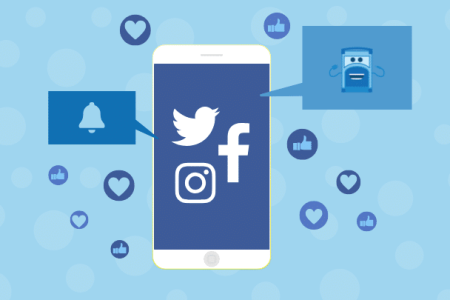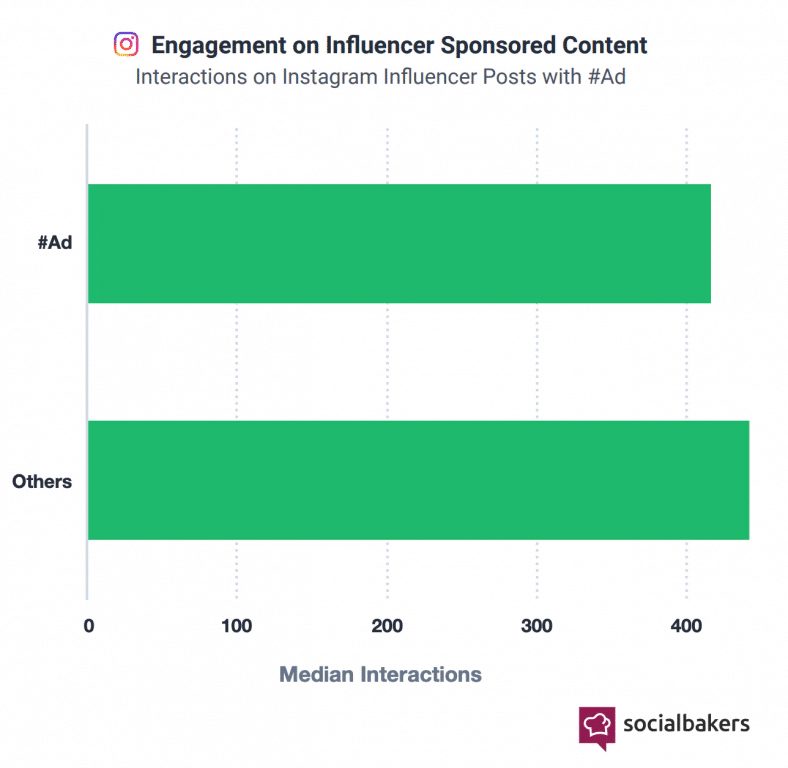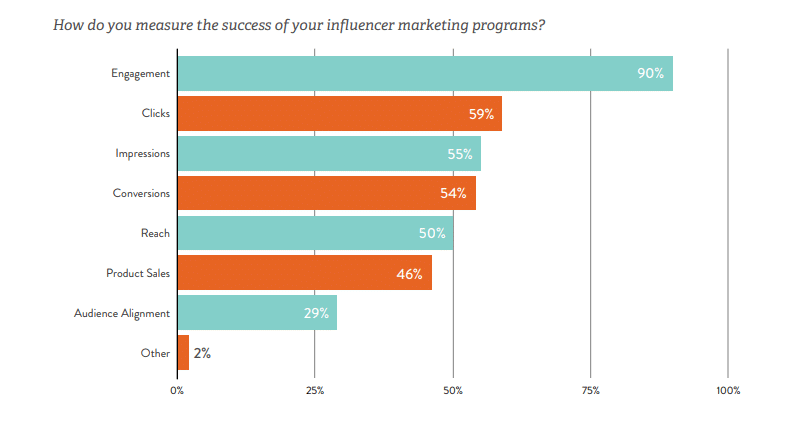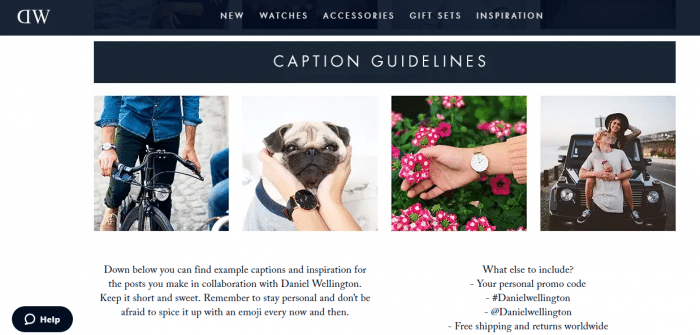Your customers are tuning out traditional ads.
But as their reliance on these ads decreases, they’re turning to recommendations from their network. This includes the social media accounts they follow, even more frequently.
Influencer marketing is rooted in authentic, authoritative recommendations, so it is a powerful way to acquire and retain new customers.
As Influencer Marketing Hub explains, influencers are “people who have built a reputation for their knowledge and expertise on a particular topic”. So, influencers hold significant referral power, no matter how large their audience is.
Influencers will authentically and seamlessly show how they use your products in everyday life, with their own voice, on their own social media accounts. Given this, your customers will listen and trust them, and won’t treat influencer posts like traditional ads.
Want even more reasons to start an influencer marketing program? Check out these influencer marketing statistics.
How effective is influencer marketing?
You’re probably wondering just how powerful influencer marketing can be. If you need any reassurance that starting influencer marketing is worth it, we have plenty of research-backed proof right here.
Influencers’ authority can easily convince consumers to buy your products, and their position leads consumers to readily trust them. This yields substantial results for the brands that maintain influencer marketing programs. This is a paid media that’s been creating a storm in marketing and ROI
Let’s take a look at why influencer marketing is effective.
Influencers’ authority actively impacts customer purchasing decisions
Influencers play a strong role in today’s consumer purchases. This is especially evident on platforms like Instagram and Facebook. But, if you’re still on the fence, here are some statistics that prove it.
- According to the Digital Marketing Institute, almost half of consumers “depend on influencer recommendations” to determine which products to purchase.
- 81% of consumers turn to blogs for advice. Many influencers are bloggers. (Neil Patel)
- 74% of consumers decide what to buy based on social media posts. (Social Media Week)
- Also, 60% of people actively look to blogs, vlogs, and social media posts for opinions on products before they consider purchasing a product. (Digital Marketing Institute)
- 61% of 18- to 34-year-old consumers “have at some point been swayed in their decision-making by digital influencers.” (Econsultancy)
- Potential customers are 71% more likely to “make a purchase based on social media referrals.” (Neil Patel)
- 60% of consumers would consider purchasing an influencer-promoted product if they see it in a store. (Digital Marketing Institute)
- 40% have actually purchased a product after seeing an influencer use it on social media. (Digital Marketing Institute)
- 86% of women consult social media for opinions and advice about what to purchase. (a.list)
- 68% of marketers who responded to a Referral Rock survey mentioned that they want those who are “well known in [their brand’s] niche” to be their influencers.
Customers trust influencer recommendations as reliable, just like they trust family and friends
Influencers have more of a built-in trust with their followers than you do, they already built a relationship with their audience. They may not always be related, but their recommendation still outweighs most.
- According to a Nielsen study, over 90% of consumers from various markets trust people in their network—people they know and follow. Influencers are part of this network.
- 89% of millennial women trust recommendations from peers more than recommendations directly from a brand. (Changing The Face Of Modern Consumerism – Mom Central)
- Nearly 75% of consumers rely on “word-of-mouth” on social media when deciding whether to purchase a product. (Influencer Marketing Association)
- 87% of millennial women trust products after “doing their own research.” This “research” heavily involves seeking authoritative opinions from those who have used a product —mainly peers. (Changing The Face Of Modern Consumerism – Mom Central)
- Nearly half of Twitter users trust the recommendations of influencers, and 40% have bought a product “as a direct result of a tweet from an influencer.” (Twitter)
- 60% of YouTube subscribers trust product recommendations from their favorite content creators more than those from traditional celebrities. (Think with Google)
- 70% of teens trust, and relate to, YouTube influencers more than traditional celebrities. (Think with Google)
- In the Keller Fay Group and Experticity survey, consumers rated influencers “as more impactful compared to an average person, based on the following characteristics: more credible and believable (94% vs. 83%), more knowledgeable (94% vs. 84%), and better at explaining how [a] product works or could be used (92% vs. 83%).” (Marketing Dive)
Consumers’ trust for traditional ads keeps decreasing
Though their trust for traditional ads is decreasing, their reliance on influencers keeps accelerating.
- Only 33% of consumers say they trust traditional ads. (Social Media Today)
- In addition, 30% of consumers use ad blockers—this shows that they place little to no trust in traditional ads and don’t want their life invaded by these promotions. (Social Media Today)
- Nearly half of consumers think that traditional ads are “annoying or irrelevant.” (Tribe)
- However, on Instagram, users interact with sponsored content (marked with #ad) and non-sponsored content at almost equal engagement levels. In other words, even if they know that an influencer’s post is sponsored by a brand, they trust it as a recommendation and don’t disengage like they would with traditional ads. (Socialbakers)
Infographic source: Socialbakers
- Internet users trust user-generated content (including posts by influencers) 50% more than traditional media such as ads. (Neil Patel)
- 67% of consumers stated that they “had no negative reaction to sponsored influencer content whatsoever.” (Tribe)
Brands trust influencer marketing as well, because of the results it provides
Consumers aren’t the only ones who trust influencers. Brands trust influencer marketing too and are finding that it is easier to tap into to new channels and groups of people they might not otherwise have been able to.
- Influencer marketing is the fastest-growing online customer acquisition method. (Tomoson)
- Marketers’ interest in influencer marketing has risen 90x since 2013, according to Google Keywords and Google Trends. (Neil Patel)
- Google searches for “influencer marketing” increased by 1500% over the past three years. (Influencer Marketing Hub)
- The marketing experts that Referral Rock surveyed named influencer marketing as their 2nd priority, after content marketing.
- 75% of national advertisers use influencer marketing. (Association of National Advertisers)
- 51% of marketers believe they “acquire better customers through influencer marketing.” (Tomoson)
- 63% of marketers plan to increase their spending on influencer marketing within the next year. (Influencer Marketing Hub)
- In 2017, 93% of marketers spent more than $10,000 on their influencer campaigns. (Linqia)
- It’s projected that businesses will spend at least $10 billion on influencer marketing in 2020. (Mediakix)
And brands that use influencer marketing reap significant rewards
Brands are finding it to be in their best interest to try influencer marketing because the potential outcome is so great.
- 94% of marketers who use influencer marketing find it an effective practice. (Social Media Today)
- 22% of marketers believe that influencer marketing is the most cost-effective customer acquisition method. (Tomoson)
- Influencer marketing can generate up to 11 times the ROI of traditional advertising. (Social Media Today)
- On average, businesses make $6.50 for every $1 spent on influencer marketing. (Tomoson)
- And for every $1 spent on influencer marketing, businesses gain $5.20 in earned media value – $5.20 worth of publicity. (Influencer Marketing Hub)
What factors are key to successful influencer marketing campaigns?
According to Linqia, brands measure the ROI of their marketing campaign in a variety of ways, including conversions, reach, impressions, engagement, clicks, and product sales. And the majority will use more than one of these metrics to measure success.
Infographic source: Linqia
Regardless of the way you measure ROI, two factors stand out in successful influencer marketing campaigns. To develop an influencer marketing campaign that brings in loads of new and repeats customers, you’ll need authenticity and high engagement. Influencers, marketers, and customers agree that these two factors are key to successful influencer marketing.
Authenticity
Authenticity is one of the most crucial factors in creating a successful influencer program. Customers can see right through “sales-pitch” style sponsorships. But when an influencer uses their own genuine voice to share a product, customers listen.
- Nearly 70% of marketers name “authenticity and transparency” as crucial to successful influencer marketing. (Econsultancy)
- 89% of marketers value influencers’ ability to “create authentic content for [their] brand” as a top benefit of influencer marketing (Social Media Today)
- 90% of marketers believe that “brands need to take authenticity and transparency more seriously, for [influencer marketing] to be sustainable over the long term.” (Econsultancy)
- 61% of consumers prefer influencers who create authentic, engaging content. (Econsultancy)
- 37% of consumers said that “if influencer content was authentic and high-quality, it negated the fact that it was sponsored.” (Tribe)
- Influencers themselves also prioritize authenticity when they choose the brands they work with. They prefer to pick brands that fit their niche, and ones that they think their audience would enjoy. (Tribe)
Daniel Wellington: Case Study In Authentic Influencer Marketing
Watch brand Daniel Wellington offers a prime example of successful influencer marketing, as Econsultancy demonstrates and you’ll see that the authenticity of influencers is key to Daniel Wellington’s success.
- In 2018, Daniel Wellington received the most mentions from influencers out of any brand on Instagram (over 20,000 posts tagged with #ad).
- Influencer marketing has been integral to Daniel Wellington’s success since the brand was founded in 2011. Instead of running traditional advertising, the brand’s first campaign involved sending free watches to smaller micro-influencers in exchange for mentions on their social media accounts.
- By 2015, Daniel Wellington had generated $220 million in revenue and had sold one million watches in a single year.
- Daniel Wellington recruits influencers with a variety of niches, including fashion, travel, and lifestyle, and a variety of follower counts, but all fit well with its mission and have a following that matches the brand’s target audience.
- The brand gives influencers a sufficient amount of creative control, and encourages influencers to “stay personal” in their captions, but requires influencers to include certain mentions and hashtags.
- Like other successful brands, Daniel Wellington offers example captions and inspirations for influencers but reminds influencers to impart their authentic voice and unique perspective into their own posts.
- Daniel Wellington uses this authenticity to its advantage on its own social media accounts. The brand’s entire Instagram feed (@danielwellington) is made up of its own influencers’ highest-quality posts (repurposed from influencers’ own feeds, with new captions and credits to the influencer), as well as other user-generated content.
Influencer guidelines, and examples of influencer-created Instagram photos, on the Daniel Wellington website.
Engagement
Engagement can be defined as the interactions an influencer receives on a post. This includes the likes and comments a post receives, as well as the number of times people share the post. (Scrunch). And engagement is highly valued as a measure of how well an influencer marketing campaign is performing.
- 90% of marketers gauge the success of their influencer campaigns based on engagement. (Influencer Marketing Hub)
- 85% of marketers name engagement data as the largest metric of success for influencer marketing. (Econsultancy)
- 77% of marketers value influencers’ ability to “drive engagement around [their] brand” as a top benefit of influencer marketing (Social Media Today)
Instagram is a high engager
Brands and influencers are flocking to Instagram because of the large amounts of engagement on the platform.
Infographic source: Influencer Marketing Hub
- Users are highly engaged on Instagram as a whole, so “Instagram is becoming the #1 social media platform when it comes to engagement for brands.” As a result, “businesses [are] leveraging Instagram for advertising more than ever before.” (Socialbakers)
- As shown in the infographic above made by Influencer Marketing Hub, engagement rates with influencer posts on Instagram outpace engagement rates on Twitter, at all follower counts.
- 93% of all influencer campaigns use Instagram. (Mobile Marketer)
- 71% of marketers surveyed by Influencer Marketing Hub “predominantly tap into Instagram for influencer marketing.”
- In the third quarter of 2018, influencers’ use of Instagram Stories jumped 60%. (Mobile Marketer)
- 80% of influencers use Instagram as their primary social network. (Mobile Marketer)
- 60% of smaller influencers say that brands request posts on Instagram most often. (Influencer Marketing Association)
- Meanwhile, the use of Facebook and Twitter for influencer campaigns is declining. The use of Facebook for these campaigns dropped 20%, and the use of Twitter dropped 10%. (Mobile Marketer)
Micro-influencers are great for engagement
Businesses should never underestimate the power of micro-influencers to drive engagement – and to deliver authentic content.
- Micro-influencers (influencers with less than 100,000 followers) receive the highest relative engagement from followers. (Social Media Today)
- The majority of influencers are micro-influencers with less than ten thousand followers. (Socialbakers)
- In a Keller Fay Group and Experticity survey, 82% of respondents said they were highly likely to follow a micro-influencers recommendation. (Marketing Dive)
- Relatability helps generate engagement— 61% of consumers say that micro-influencers produce the most relatable content. Econsultancy
- Even though macro-influencers have higher reach (view and follower counts) and higher like and comment counts as a whole, micro-influencers are a more cost-effective option for marketers, because they yield higher rates of engagement at a lower cost to the brand. Scrunch
- 84% of micro-influencers charge no more than $250 per sponsored Instagram post, and 97% charge $500 or less. (Tribe)
- Micro-influencers command high levels of trust. Only 3% of consumers are swayed by celebrity-level endorsements, compared with the 30% who would consider purchasing products from non-celebrity bloggers. (Social Media Today)
- According to a Socialpubli study, 84% of micro-influencers recommend products or services at least once every week. (PR Daily)
- 99% of micro-influencers “believe in what they promote.” (PR Daily)
Takeaways
As shown by all these facts and statistics, influencer marketing is a powerful way to gain customers, because your customers trust the influencers’ genuine, authoritative recommendations far more than traditional ads.
Hopefully, after reading through this article, you have an idea of how influencer marketing can benefit you. If you start an influencer marketing program, make sure to recruit influencers who will use their authentic voices, and who will drive engagement! Apply best practices on how to use influencer marketing. And remember, bigger isn’t always better, micro-influencers deliver high engagement levels and high authenticity.
Have any compelling influencer marketing statistics that we haven’t included here? Let us know. We’d love to include them in this article.
Looking for influencer marketing software?







